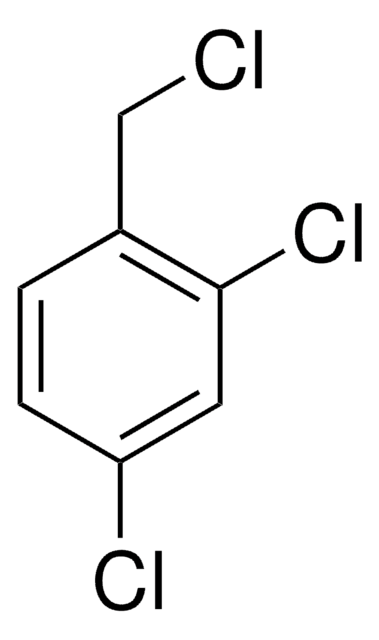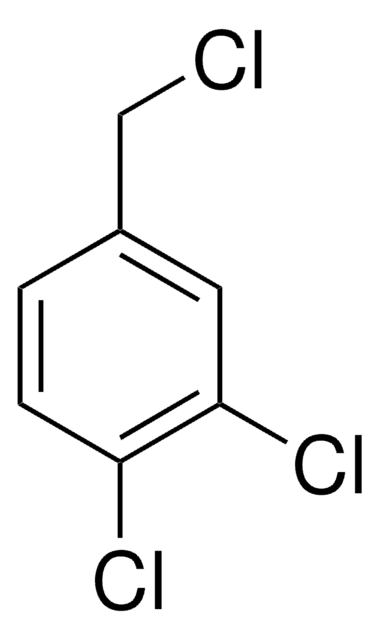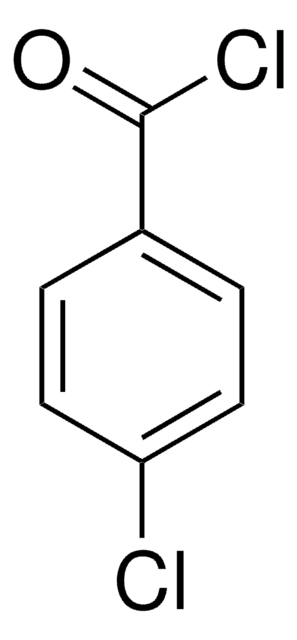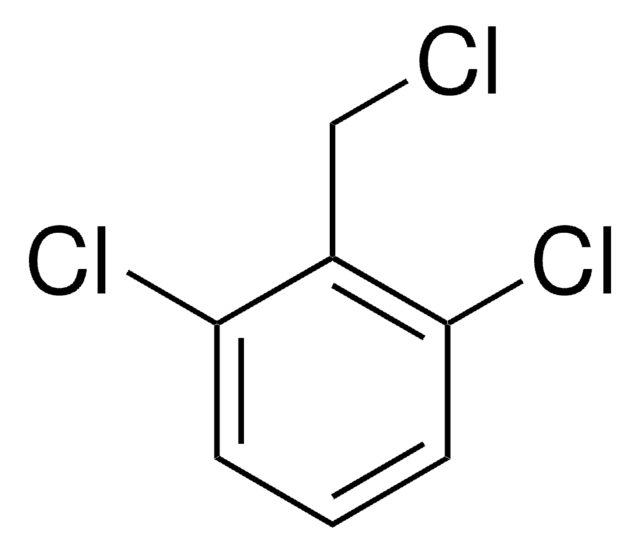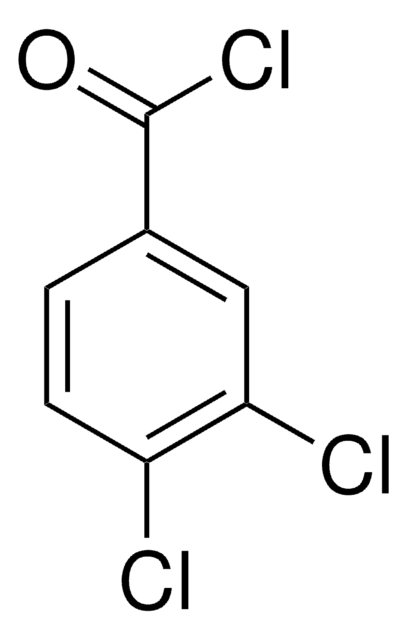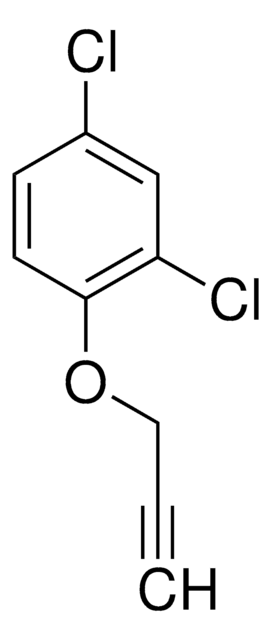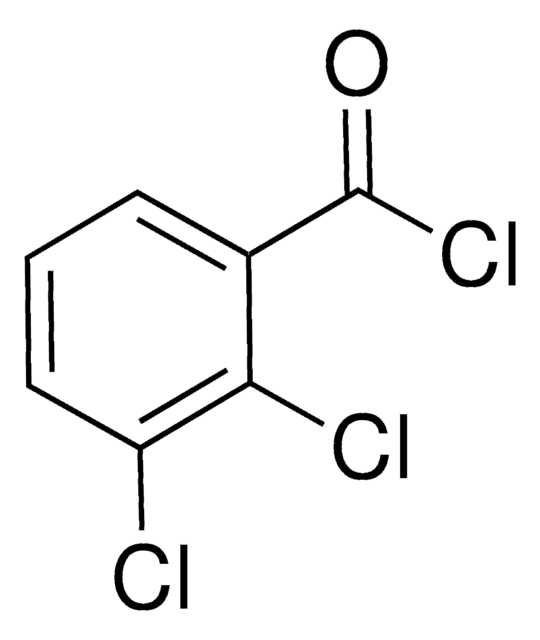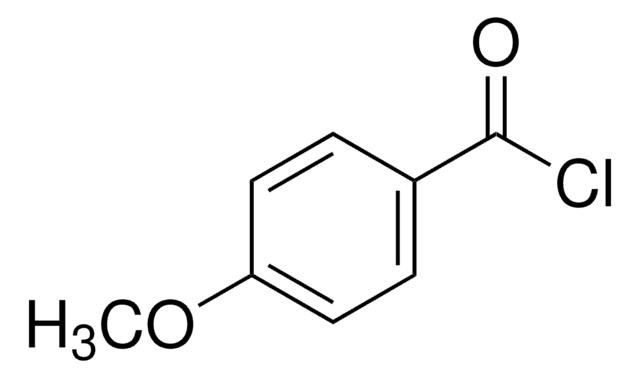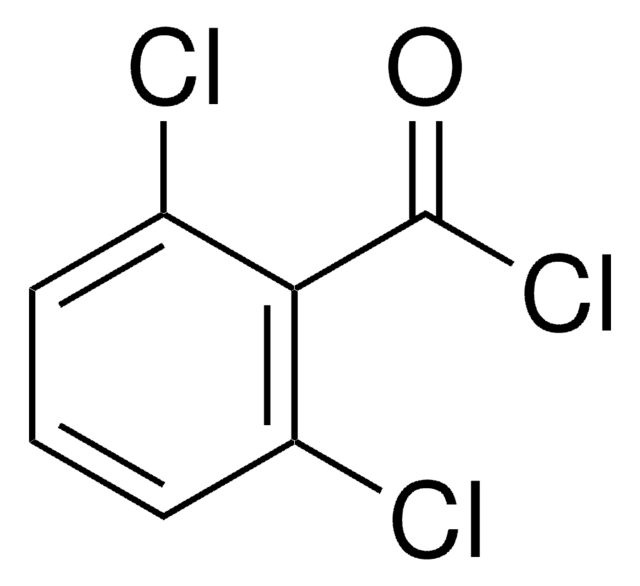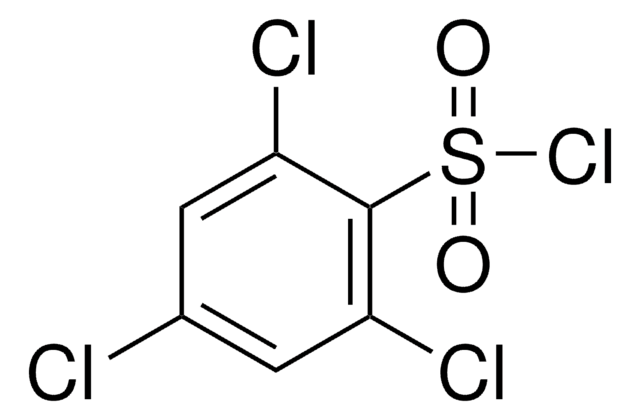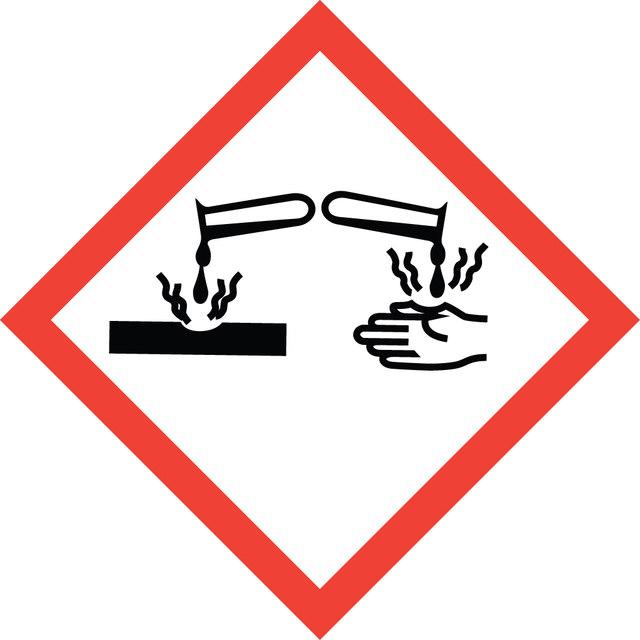All Photos(1)
About This Item
Linear Formula:
Cl2C6H3COCl
CAS Number:
Molecular Weight:
209.46
Beilstein:
608324
EC Number:
MDL number:
UNSPSC Code:
12352100
eCl@ss:
39050538
PubChem Substance ID:
NACRES:
NA.22
Recommended Products
Assay
98%
refractive index
n20/D 1.592 (lit.)
bp
150 °C/34 mmHg (lit.)
mp
16-18 °C (lit.)
density
1.494 g/mL at 25 °C (lit.)
functional group
acyl chloride
chloro
SMILES string
ClC(=O)c1ccc(Cl)cc1Cl
InChI
1S/C7H3Cl3O/c8-4-1-2-5(7(10)11)6(9)3-4/h1-3H
InChI key
CEOCVKWBUWKBKA-UHFFFAOYSA-N
Looking for similar products? Visit Product Comparison Guide
Application
2,4-Dichlorobenzoyl chloride was used in the synthesis of biaryls by following the Suzuki coupling. It was used for acylation in the synthesis of potent non-sarcosine-derived Gly T1 inhibitors.
2,4-Dichlorobenzoyl chloride was used in the synthesis of thioesters of 4-chlorobenzoate and 2,4-dichlorobenzoate.
Signal Word
Danger
Hazard Statements
Precautionary Statements
Hazard Classifications
Eye Dam. 1 - Skin Corr. 1B
Storage Class Code
8A - Combustible corrosive hazardous materials
WGK
WGK 1
Flash Point(F)
278.6 °F - closed cup
Flash Point(C)
137 °C - closed cup
Personal Protective Equipment
dust mask type N95 (US), Eyeshields, Gloves
Regulatory Information
新产品
Choose from one of the most recent versions:
Already Own This Product?
Find documentation for the products that you have recently purchased in the Document Library.
Zhijian Zhao et al.
Bioorganic & medicinal chemistry letters, 16(23), 5968-5972 (2006-09-22)
This Letter describes the synthesis and SAR, developed through an iterative analog library approach, of potent and selective non-sarcosine-derived GlyT1 inhibitors.
Markus Thor et al.
Bioorganic & medicinal chemistry letters, 12(24), 3565-3567 (2002-11-22)
A series of 5-substituted 2-benzoylaminobenzoic acids has been synthesized and assayed for PPARalpha/gamma activity. Both dual activators and selective PPARgamma agonists have been identified. This class of compounds was shown to activate the PPARgamma receptor through interaction with a novel
V Romanov et al.
Journal of bacteriology, 178(9), 2656-2661 (1996-05-01)
Corynebacterium sepedonicum KZ-4, described earlier as a strain capable of growth on 2,4-dichlorobenzoate (G.M. Zaitsev and Y.N. Karasevich, Mikrobiologiya 54:356-369, 1985), is known to metabolize this substrate via 4-hydroxybenzoate and protocatechuate, and evidence consistent with an initial reductive dechlorination step
Our team of scientists has experience in all areas of research including Life Science, Material Science, Chemical Synthesis, Chromatography, Analytical and many others.
Contact Technical Service